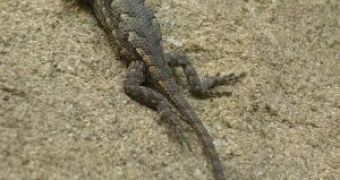Reproduction involves a critical decision: Should an organism invest energy in a few large offspring or many small ones?
Bigger animals, like whales, elephants, people, and so on usually employ K-selection, (slow reproductive rate) because they can devote more resources to feeding and protection of each individual offspring, thus reducing the need for a large number of offspring.
Smaller animals, like rodents, insects and so on, usually employ r-selection. They devote fewer resources to each individual offspring; a large number of offspring die soon after birth/hatching, but normally, enough individuals survive to maintain the population. Also, according to Allen's rule, the so called warm blooded animals will be bigger in colder climate, because their relative surface decreases this way and their heat losses also. But cold blooded animals will shrink in size in colder climates because their seasonal time of activity and feeding decreases.
Also, bigger animals have less possibilities to encounter proper shelter during the cold weather. Michael Angilletta (Indiana State University), Chris Oufiero (University of California, Riverside), and Adam Leach? (University of California, Berkeley) used a new statistical approach to test multiple theories at the same time, in order to shed light on many evolutionary problems. Data from many populations of Eastern Fence Lizards (Sceloporus undulatus) (photo), a cold blooded reptile, revealed that the females in colder environments produce larger and less offspring than lizards in warmer environments. This comes in conflict with the previous biological laws.
Some scientists think that the larger size of offspring counteracts their slow growth in the cold. Others suggest that large offspring are not directly linked to temperature at all.
Large offspring just happen to be produced by large mothers, who grow large because they require more energy to reproduce in the cold. When they tested the theories simultaneously with their new approach, the team concluded that the effect of temperature on reproduction is a byproduct of its effect on adult size. "This result could have widespread significance," says Angilletta.
"Temperature determines the adult size of virtually all organisms. For many of these organisms, we expect temperature to also leave an imprint on reproduction."

 14 DAY TRIAL //
14 DAY TRIAL //